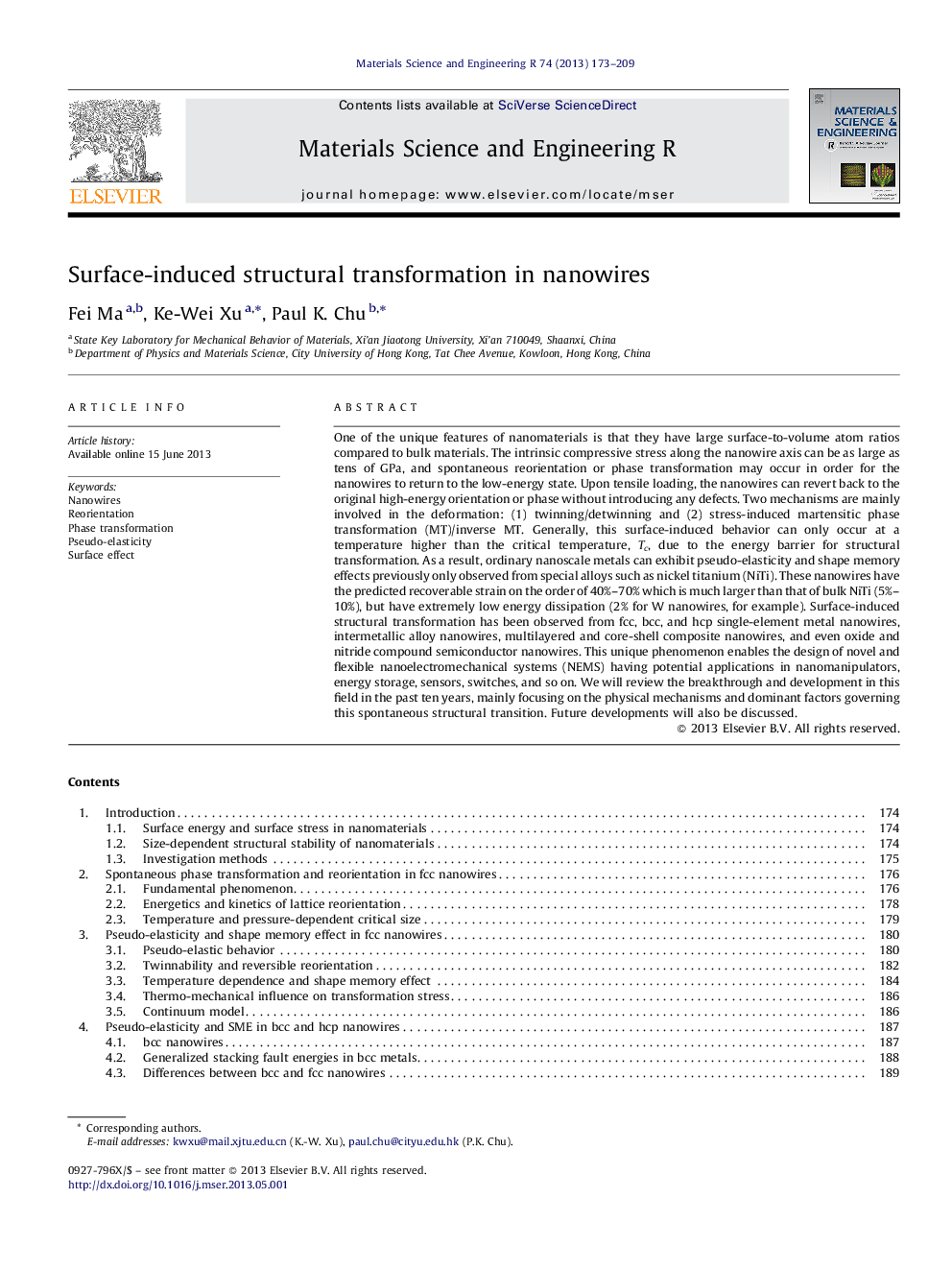| کد مقاله | کد نشریه | سال انتشار | مقاله انگلیسی | نسخه تمام متن |
|---|---|---|---|---|
| 1532431 | 996145 | 2013 | 37 صفحه PDF | دانلود رایگان |
عنوان انگلیسی مقاله ISI
Surface-induced structural transformation in nanowires
دانلود مقاله + سفارش ترجمه
دانلود مقاله ISI انگلیسی
رایگان برای ایرانیان
کلمات کلیدی
موضوعات مرتبط
مهندسی و علوم پایه
مهندسی مواد
مواد الکترونیکی، نوری و مغناطیسی
پیش نمایش صفحه اول مقاله

چکیده انگلیسی
One of the unique features of nanomaterials is that they have large surface-to-volume atom ratios compared to bulk materials. The intrinsic compressive stress along the nanowire axis can be as large as tens of GPa, and spontaneous reorientation or phase transformation may occur in order for the nanowires to return to the low-energy state. Upon tensile loading, the nanowires can revert back to the original high-energy orientation or phase without introducing any defects. Two mechanisms are mainly involved in the deformation: (1) twinning/detwinning and (2) stress-induced martensitic phase transformation (MT)/inverse MT. Generally, this surface-induced behavior can only occur at a temperature higher than the critical temperature, Tc, due to the energy barrier for structural transformation. As a result, ordinary nanoscale metals can exhibit pseudo-elasticity and shape memory effects previously only observed from special alloys such as nickel titanium (NiTi). These nanowires have the predicted recoverable strain on the order of 40%-70% which is much larger than that of bulk NiTi (5%-10%), but have extremely low energy dissipation (2% for W nanowires, for example). Surface-induced structural transformation has been observed from fcc, bcc, and hcp single-element metal nanowires, intermetallic alloy nanowires, multilayered and core-shell composite nanowires, and even oxide and nitride compound semiconductor nanowires. This unique phenomenon enables the design of novel and flexible nanoelectromechanical systems (NEMS) having potential applications in nanomanipulators, energy storage, sensors, switches, and so on. We will review the breakthrough and development in this field in the past ten years, mainly focusing on the physical mechanisms and dominant factors governing this spontaneous structural transition. Future developments will also be discussed.
ناشر
Database: Elsevier - ScienceDirect (ساینس دایرکت)
Journal: Materials Science and Engineering: R: Reports - Volume 74, Issue 6, June 2013, Pages 173-209
Journal: Materials Science and Engineering: R: Reports - Volume 74, Issue 6, June 2013, Pages 173-209
نویسندگان
Fei Ma, Ke-Wei Xu, Paul K. Chu,